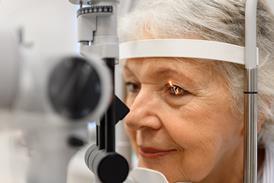The coronavirus outbreak has shone a stark light on the relationship between health inequalities, digital and social exclusion. By Helen Milner

We have turned to digital technologies to help us face the spread of coronavirus. The internet allows us to search for NHS advice online, shift to virtual appointments with healthcare professionals, and connect with our loved ones through video calling apps.
At the same time, the pandemic has shone a light on the severe problem of digital exclusion that we have in the UK. There are currently 11.9 million people in the UK who are lacking the digital skills they need for everyday life. That means that one in five people are stuck in their homes without sufficient skills to access health information or avoid social isolation.
A few weeks ago (though it feels like a lifetime away) I was speaking at the Good Things Foundation roundtable in Westminster, discussing the question: “how can we ensure no one is excluded from a digital-first health service?”.
And unfortunately, the UK lockdown means that we are not in the privileged position that we were back then, when we were able to offer digital skills training through a blend of face-to-face support and online learning. This is the model that has allowed us at Good Things Foundation to improve the lives of more than 3 million people through digital since 2010.
Deprived populations
The coronavirus outbreak follows the recent publication of the Marmot review into rising health inequalities, shown to be worsening for people in the most deprived areas.
The lockdown has made it clear for all to see that digital inclusion is not a nice-to-have, it’s a need-to-have – and that when we emerge from this crisis the provision of digital skills will be higher up the agenda for policymakers
We know that social exclusion correlates closely with digital exclusion – of the 4.1 million people who are offline in the UK, 71 per cent have no more than a secondary level education, nearly half are from low-income households, and 80 per cent are aged 50+.
This means that the people who are the most vulnerable in terms of the health and economic impact of the outbreak are also the least likely to be able to use the digital health services they need.
If we want to reduce health inequalities, we need to challenge the idea that digital technology alone will improve health outcomes. There are people who lack the skills to use digital health tools, and others who have the skills but don’t have the motivation, confidence or access to use the tools for a number of complex reasons.
A few weeks ago, using digital health tools (to book appointments online, or order repeat prescriptions) helped to improve peoples’ health outcomes and deliver cost savings to the NHS – but they were not essential. Offline methods were available for digitally excluded people. But now, digital channels are vital if we are to stay at home, protect the NHS, and save lives.
My hope is that the lockdown has made it clear for all to see that digital inclusion is not a nice-to-have, it’s a need-to-have – and that when we emerge from this crisis, which we will, the provision of digital skills will be higher up the agenda for policymakers.
We have been developing the Digital Health Hubs model in partnership with NHSX – community-led hubs which offer a safe and trusted place to support people to use digital health tools in a place they feel comfortable, joining up digitally excluded people with the formal health service.
But digital exclusion is a huge problem, and not one that can be fixed with one-off programmes. We need a sustained effort, so that digital inclusion is embedded into a digital-first health service, and everyone can benefit – from patients and staff, through to those commissioning and delivering services.
Cost savings are clear – our three-year Widening Digital Participation programme with the NHS saved £6.40 for every £1 spent. But there are also other benefits that can’t be costed, such as higher trust in the NHS and people living longer with long-term health conditions, and enjoying a better quality of life.
We all have a stake in this, and we all need to take some responsibility, and we need a concerted effort to address this that brings together community organisations, individuals and the more formal health system.
We – along with the community organisations we work with – are doing all we can to tackle the immediate skills gap people who are now isolated, and often frightened, are facing. The coronavirus outbreak has shone a stark light on the relationship between health inequalities, digital exclusion and social exclusion, and so in the longer term we need to ensure we make digital and social inclusion a priority so we can all truly rely on a digital health system.





























2 Readers' comments